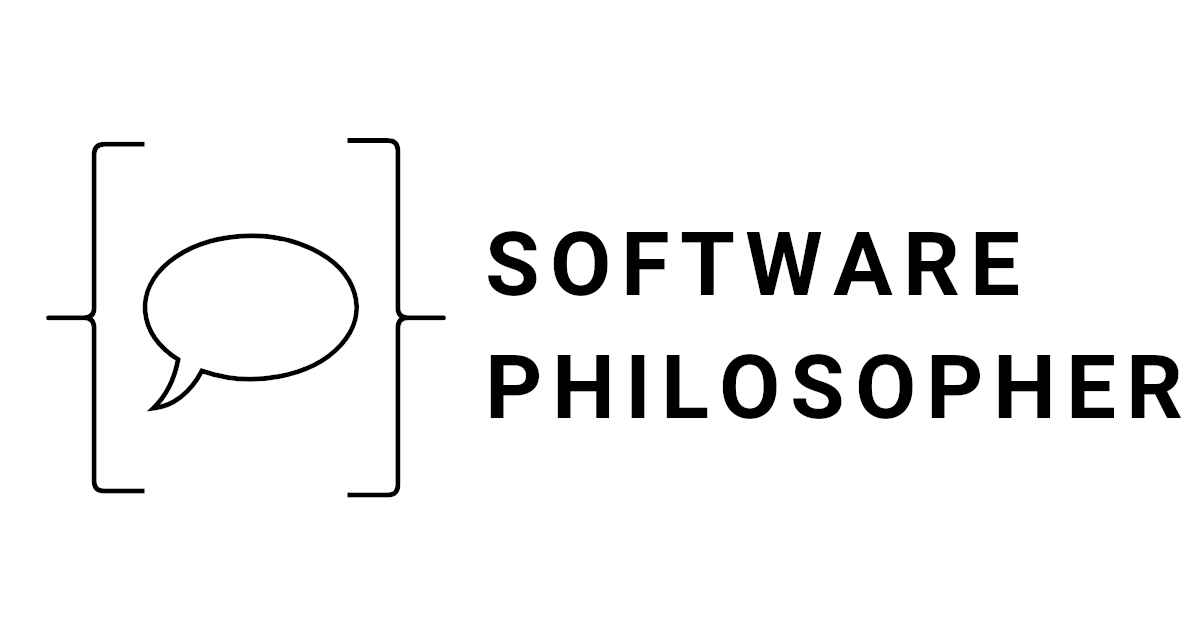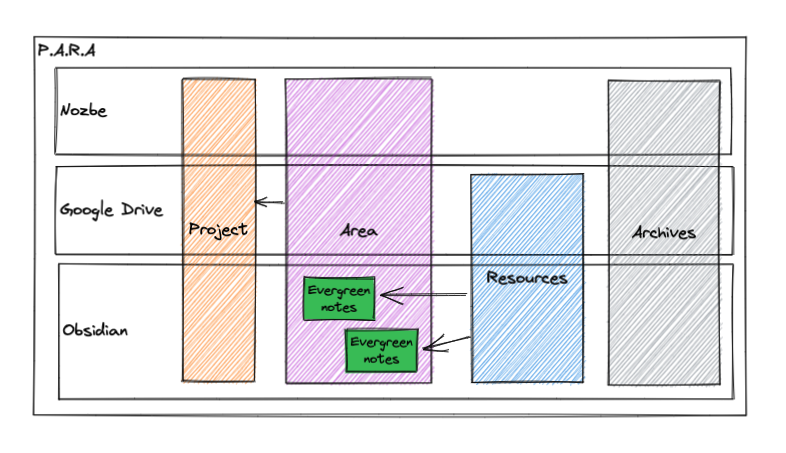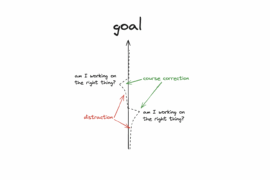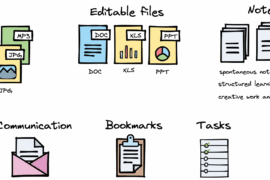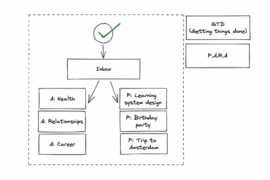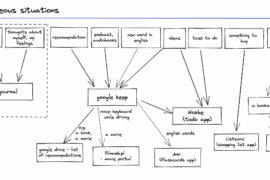If I haven’t created a consistent structure for my digital resources I would get lost. It’s because I collect a lot of things: notes, files, ideas. This system is a combination of my three top gallup strengths: input, maximizer and intellection.
- Input because I want to store every useful piece of information
- Maximizer because I want to do it effectively
- Intellection because I dedicate and spend some time thinking and reevaluating how I can improve it.
My main inspiration for the system is the P.A.R.A system and within the system I also try to embed a concept of evergreen notes.
Short introduction
What is P.A.R.A.?
P.A.R.A is a system created by Tiago Forte in which we separate our digital resources into 4 categories:
- P – projects – have a specific goal, end date, and series of tasks.
- A – area of responsibility – something you grow and maintain a standard over time
- R – resources – a topic or theme of ongoing interest
- A – archives – inactive items from the other three categories.
What are Evergreen notes?
It’s an idea of creating atomic, concept-oriented, and linked notes. It is inspired by the Zettelkasten method.
How do I adapt these methods to my goals?
P.A.R.A.
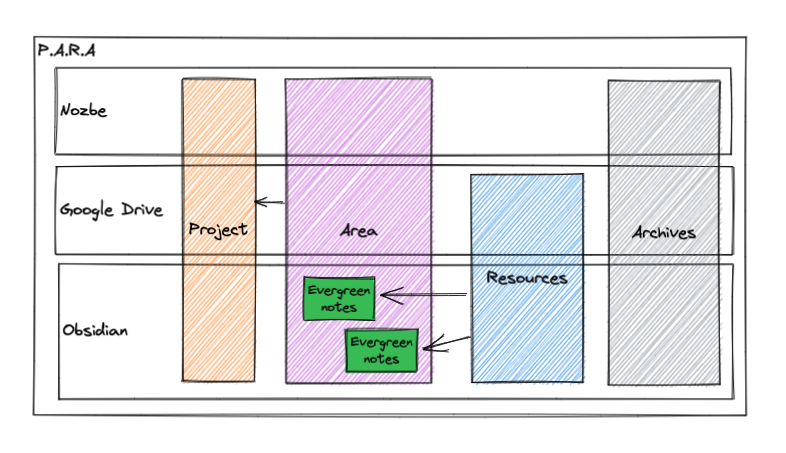
I let the PARA structure spread across both my private and work resources. They involve Google Drive, Nozbe, and Obsidian. E.g. I have 3 different google accounts: my personal one, the one from my software house, and the one from the software house’s end client. In each of them, I maintain the same structure therefore it is more straightforward for me how to navigate within them.
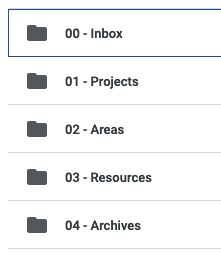
Projects
Initially, I had a problem with identifying projects. Most of the things that I did were ongoing themes, which according to the definition puts them into Areas. So I dedicated some time to thinking and identifying what are my current projects. It slightly changed my way of thinking about goals and achieving them.
Examples of my projects:
- in a private space:
- “Creating my family tree” – I kept drawing files of the trees or some notes that I collected from my family members
- “Organizing a birthday party for my dad” – I had a list of bowling clubs with their prices as well as ideas for other activities
- “Reading a series of articles about product management” – I had a list of articles from my product manager. I go one by one and make notes out of them.
- “Learning system design” – that’s the project that branched off from “areas”. I had an ongoing theme of improving my engineering skills but I created a specific project with specific goals e.g. read this book, read that article.
- in a work space
- “Data migration to EU” – I kept some engineering playbooks here or some analysis notes
- “Integration of service X” – I could keep a feature analysis and how it fits our needs, which APIs to call, and the results.
Areas
Initially, everything landed in this category. Projects without a specific goal are called hobbies. It is ok to have hobbies, but it is also important to know what goals we try to achieve – that helped me separate some specific projects from my areas.
Examples of my “areas”:
- in a private space:
- Health
- Finance
- Blog
- Career
- Happiness
- Relationships
- Growth
- in a work space:
- Recruitment
- other areas related to the everyday goals of my product team e.g. B2B or Payments.
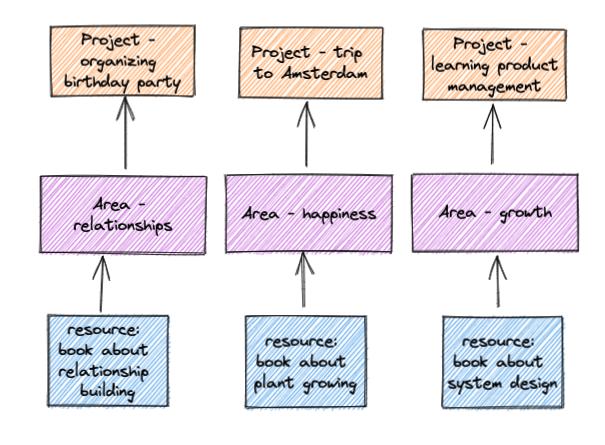
Resources
I don’t exactly stick to the definition here (“a topic or theme of ongoing interest”). In this space, I keep things that contribute to my Areas and Projects. For example, I keep books, podcasts, or course notes here. In my private space, I would split them by a medium e.g. “books”, “articles”, “podcasts”, or by a theme if I can see one. I also keep scans of documents here.
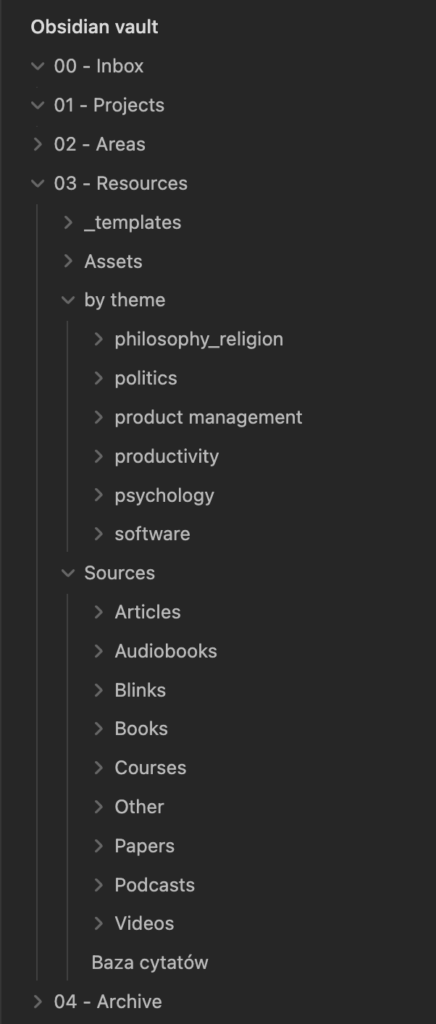
Archives
I split the “archives” folder further into “projects”, “areas” and “resources” (keeping archives of archives would let us hang in infinity). If the project is completed I move it there. I prefix the project with a year to have a nice flat list sorted by time. If I no longer dedicate my time to contribute to some Areas I will also move them.
Examples of my archives:
- Projects: “buying an apartment”, “wedding”
- Areas: “my music band”
- Resources: some old backup of notes that I haven’t processed yet. Probably this directory is a bit unnecessary
Evergreen notes
When I read a book I take notes. Later on, I process these notes and try to extract the essence that’s important to me. Potentially ask some questions that I would like this book to answer. I create a note out of it. The great thing about evergreen notes is that they are concept oriented. That means that we can come across the same concept, tackled from a different perspective in different resources (books, podcasts).
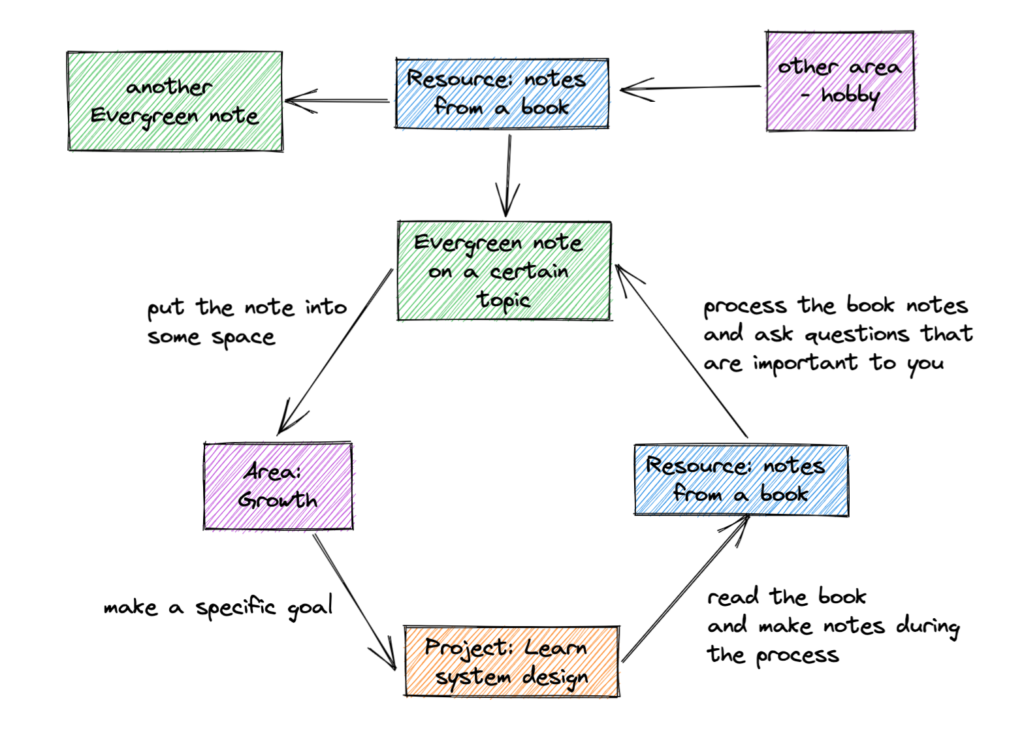
For evergreen notes, I have an obsidian template that includes a section for references. Each note links multiple notes together. A well-done evergreen note could be easily converted into a blog article. This is an example: “Why should engineer learn how to write?“
Where do I keep files?
In the beginning, I said I mirrored my structure into Obsidian and Google Drive. For more creative work that I’m ok to only access on my laptop, I keep in Obsidian. For better linking between notes, I also choose Obsidian. It can support a better thinking process.
If I needed to share or access the document anytime I choose Google Drive.
Same for calculation and price comparison etc. I would choose Google Drive and Google Sheets specifically.
Summary
I constantly evolve my system. I try to choose the best tools for their job. However, the tool is not the most important part of the system. It’s the habits and the flow. If we don’t spend enough time thinking about what we actually need, we won’t be able to achieve our goals.
I’ve been using these methods in this shape for half a year so far and I’m pretty satisfied. However, it is more than likely that it’s going to change in the future.
